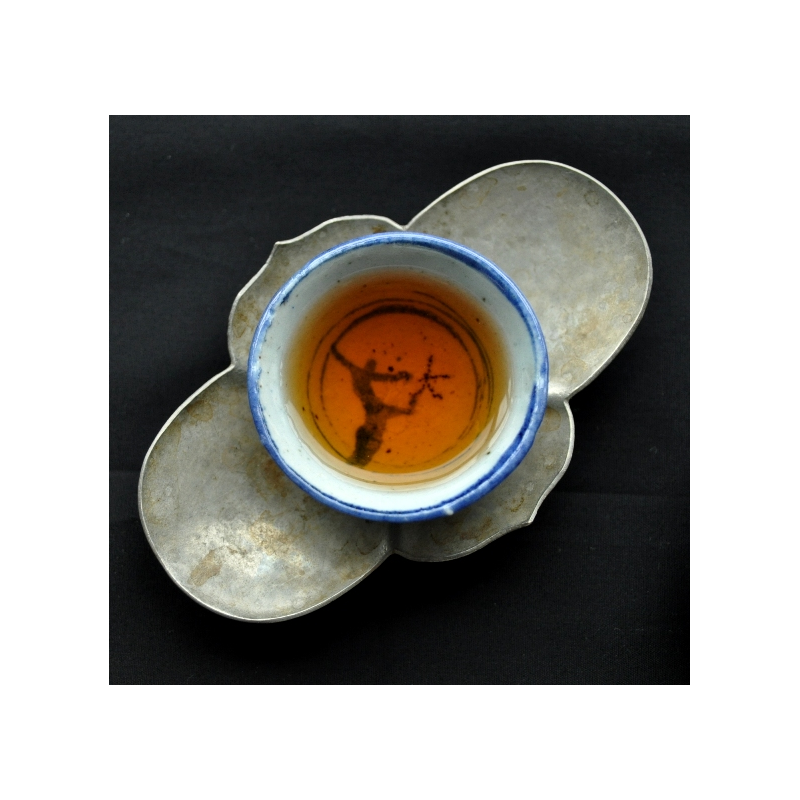1999 Spring Menghai ‘7542’ qizi bing
Tax excluded
Cultivar: Plantation and old arbor uerh
Harvested by hand: Spring 1999
Origin: Menghai Tea Factory, China / Ordered by CNNP.
Process: raw, sun dried, blended and pressed as cake.
Weight of a cake: 357 gram
Many regard this cake as the follow-up to the "Luyin" (green mark) puerh from the 60s. Having seen both next to each other, I must agree that both cakes look very similar when you look at their mix of dry leaves. 7542 is the name of the recipe. '75' stands for the year when it was started: 1975. '4' stands for a certain mix of leaves. In the case of this cake, 4 means a mix that contains smaller leaves and more buds that the '8582' cake, for instance. '2' stands for the Menghai Tea Factory. The buds are the easiest leaves to spot on a raw puerh cake: they keep the lighter yellow/gold color. There are many pitfalls in finding a good '7542': - Fakes: the more famous a puerh is, the more forgeries there are! - Age: This is a recipe that has been produced year after year until now. How do you know its age when the wrapper stays the same? - Quality of the leaves: Is this 7542 recipe stable in quality over the years? - Storage: How clean was it? Did it go through a wodui (fake aging) period? - Price : A high price is not a guarantee that it's real or good. Too good a bargain, though, is a sign of problems. Visually, we can tell that these leaves haven't been through a wodui process, otherwise their color would be much more evenly dark brown. We can also see that the wrapper is quite clean. There are no stains from water or tea the paper. The smell, on the other hand, points toward a typical old puerh storage scent: old wood, old basement smell. The first brew we obtain is dark red turning slightly brown. This color confirms that there is no cooked puerh mixed here (or the brew would be much darker). The camphor and old wood scents are very powerful and persisting. The tea coats the whole mouth quite comfortably. There's still some sharpness and astringency due to its still young age. But despite this concentration, the brew tastes very smooth and clean overall. Its aftertaste is amazingly powerful. There are so many nice things happening in the mouth: salivation, releasing of sweetness in the throat... The stomach feels warm: good chaqi. Another important characteristic: the mouth and the tongue continue to feel 'clean' and light. The follow-up brews develop even more this clean and pure taste combined with these nice old raw puerh smells and the powerful aftertaste. This is a cake with lots of energy and a good balance.







